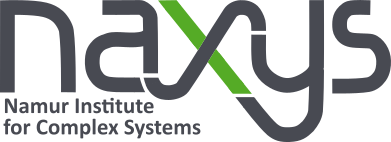
- This event has passed.
Arash Rahimi-Iman (Justus-Liebig-Universität Gießen)
Title : Machine learning optimization of chiral photonic metasurface: evolution-based algorithm and deep learning approach
Abstract :
Chirality of light in the simplest case is given by the handedness of circular polarization, for which handedness preserving or nonpreserving optics can be developed [1]. Chiral photonics has been receiving increased attention due to prospects of delivering tailored metamaterials with strong ‘chiroptical’ responses at predesignated wavelengths [2], as interactions between chiral light and matter could be attractive for applications ranging from chemistry to information processing.
Circularly polarized electromagnetic waves incident on a nanopatterned metasurface can experience frequency-dependent filtering effects in reflection and/or transmission geometry. Such structures can be produced in thin-film dielectrics or metallic sheets. In a comparison of two machine learning optimization approaches, the predicted chiral patterns (here in GaP) feature an increased circular dichroism [3], which resulted in a stronger reflectivity of right circularly than left circularly polarized waves compared to a simpler human-designed pattern. Outcomes from the multi-epoch design improvement procedure – through an evolution- and neural network-based algorithm – are discussed for a frequency-range-neutral comparative consideration promising for both (nano)printing or ablating of surface patterns, and indicating further improvements potentials with more advanced algorithms.
References:
[1] E. Plum, N. I. Zheludev (2015): Chiral Mirrors, Appl.Phys.Lett. 106, 221901.
[2] W. Ma, F. Cheng, Y. Liu (2018): Deep-Learning-Enabled On-Demand Design of Chiral Metamaterials, ACS Nano 12, 6326.
[3] O. Mey, A. Rahimi-Iman (2021): Machine Learning-Based Optimization of Chiral Photonic Nanostructures: Evolution- and Neural Network-Based Designs, Phys.Stat.Sol. RRL 16, 202100571.
This seminar will take place in Room 266 at the Faculty of Sciences.

